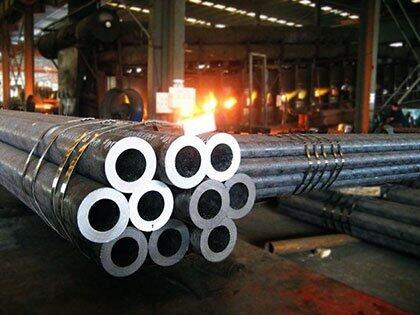Seamless steel pipe are widely used in machinery because the mechanical properties of such steels are very good. However, because it is medium carbon steel, the quenching machine is not good and can be hardened to HRC42-46. If surface hardness is required, and it is desired to reflect the high-quality mechanical function of the seamless steel pipe, the method is to carburize and quench the surface of the seamless steel pipe, so that the required surface hardness can be obtained.

1. After the quenching of the seamless steel pipe, the hardness is greater than HRC55 (up to HRC62) before passing the temper. The highest hardness for practical application is HRC55 (high frequency quenching HRC58).
2. The seamless steel pipe should not be subjected to the heat treatment process of carburizing and quenching.
After quenching and tempering, the parts have good comprehensive mechanical functions and are widely used in various important structural parts, especially connecting rods, bolts, gears and shafts working under alternating load. However, the surface hardness is low, and it is not wear-resistant. The surface hardness of the part can be improved by quenching and tempering + surface hardening.
Carburizing treatment is generally used for heavy-duty parts with surface wear resistance and core impact resistance, and its wear resistance is higher than quenching and tempering + surface quenching. The surface has a carbon content of 0.8-1.2%, and the core is generally 0.1-0.25% (in a special case, 0.35%). After heat treatment, the surface can obtain high hardness (HRC58-62), low core hardness and impact resistance.
If carburizing with a seamless steel pipe, the core will have hard and brittle martensite after quenching, losing the strength of carburizing treatment. Nowadays, the materials used in the carburizing process are not high in carbon content, and the strength of the core to 0.30% can already be reached very high, and it has never appeared in practical applications. The quenching and tempering + high-frequency surface quenching process can be used, but the wear resistance is slightly worse than that of carburizing.
Read more: 5 Common heat treatment processes for seamless steel pipes


